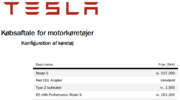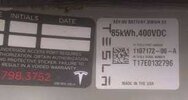Modules can't generally be replaced, either. At least, not by third parties who don't have access to hundreds or thousands of modules to try and accurately match the condition of the remaining modules. I've handled thousands of modules to-date, and still have only run into a handful that might satisfy the BMS if they were matched with another pack.
Suffice it to say, replacing a module is not a solution either. The entire pack needs to be replaced.
I'm in the best position to help people with this, since I can generally give people a great value for their existing unusable battery pack, once we inspect it and find the issue, when purchasing a full replacement pack. This way you get a full replacement pack that's been inspected and tested, vs some refurbished Franken-pack with broken fuses or mismatched modules.




